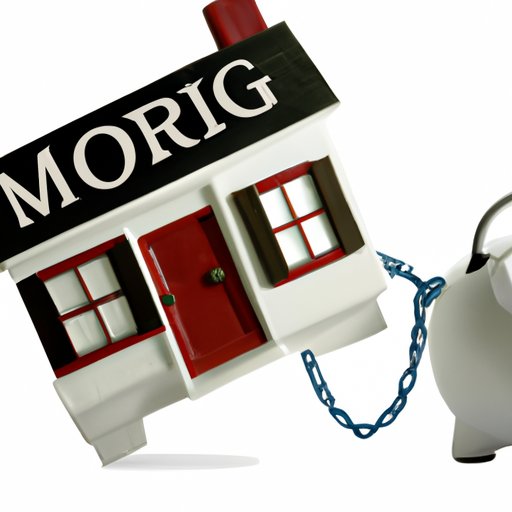
What is PMI and Why Would You Want to Get Rid of It?
If you bought a home with a down payment of less than 20%, chances are you’re paying private mortgage insurance (PMI). PMI protects the lender in case you default on your loan, but it can add hundreds of dollars to your monthly mortgage payments. Getting rid of PMI can save you money and free up extra cash each month.
How to Get Rid of PMI
There are several ways to get rid of PMI, depending on your specific situation. Here are seven of the most common methods:
Method 1: Pay Down Your Mortgage to a Certain Equity Level
One of the simplest ways to get rid of PMI is to reach a certain equity level in your home. Generally, you need to have at least 20% equity in your home before you can stop paying PMI. This means if your home is worth $200,000, you need to owe less than $160,000 on your mortgage to have achieved the necessary equity level.
Advantages: This method is straightforward and doesn’t require any extra paperwork or fees.
Disadvantages: It can take several years to pay down your mortgage enough to reach the necessary equity level.
Method 2: Request PMI Cancellation from Your Lender
If you’ve reached the necessary equity level in your home, you can request PMI cancellation from your lender. Your lender is required to cancel your PMI once you’ve paid off at least 22% of your principal balance or you’ve reached the midpoint of your loan term.
Advantages: This method is relatively simple and doesn’t require any refinancing or home improvements.
Disadvantages: Your lender may require you to pay for a new appraisal, and they can deny your request if you’ve had a history of late payments or other financial issues.
Method 3: Refinance Your Mortgage
Refinancing your mortgage can help you eliminate PMI if you currently have a conventional loan. When you refinance, you can take out a new loan that covers the remaining balance on your original mortgage, but with a new interest rate and terms.
Advantages: Refinancing can not only eliminate PMI, but it can also lower your interest rate, reduce your monthly payment, and shorten your loan term.
Disadvantages: Refinancing can come with new fees and closing costs, and if you currently have an FHA loan, you’re required to keep paying PMI for the life of the loan.
Method 4: Make Home Improvements to Increase the Value of Your Property
If you think your home’s value has increased since you bought it, you can make home improvements to increase its appraised value. This can help you reach the 20% equity level needed to get rid of PMI.
Advantages: By making home improvements, you can potentially increase your home’s value in the long term, which can help you sell it for a higher price in the future.
Disadvantages: Some home improvements can be costly, and it can take several years to recoup the cost of your investment.
Method 5: Request a New Appraisal of Your Home’s Value
If you believe your home’s value has increased significantly since you bought it, you can request a new appraisal to see if you’ve reached the 20% equity level necessary to get rid of PMI.
Advantages: A new appraisal can be a quick way to determine if you’re eligible to get rid of PMI, and it doesn’t require any extra fees or paperwork.
Disadvantages: A new appraisal doesn’t guarantee that you’ll be able to get rid of PMI, and your lender may require you to use a specific appraiser.
Method 6: Make Additional Payments Towards Your Mortgage Principal
You can make extra payments towards your mortgage principal each month to pay down your balance more quickly. This can help you reach the 20% equity level needed to get rid of PMI faster.
Advantages: Making extra payments towards your mortgage principal can reduce the amount of interest you pay over the life of your loan and help you reach the necessary equity level faster.
Disadvantages: Making extra payments can be difficult if you’re on a tight budget.
Method 7: Consider a Piggyback Mortgage to Avoid PMI
A piggyback mortgage is a second mortgage that you take out at the same time as your first mortgage. This can help you avoid paying PMI by allowing you to put down less than 20% on your home.
Advantages: A piggyback mortgage can help you avoid paying PMI and potentially lower your overall interest rate.
Disadvantages: A piggyback mortgage can come with higher interest rates and fees than a traditional mortgage.
Conclusion: Which Method is Right for You?
Getting rid of PMI can save you hundreds of dollars each month and free up extra cash for other expenses. The method you choose will depend on your specific situation and financial goals. Some methods, like paying down your mortgage or making extra payments towards your principal, can take several years to achieve the necessary equity level. Other methods, like refinancing or getting a piggyback mortgage, can help you eliminate PMI faster but may come with new fees and closing costs.
Consider your long-term financial goals and consult with a financial advisor or mortgage professional to determine which method is right for you.





